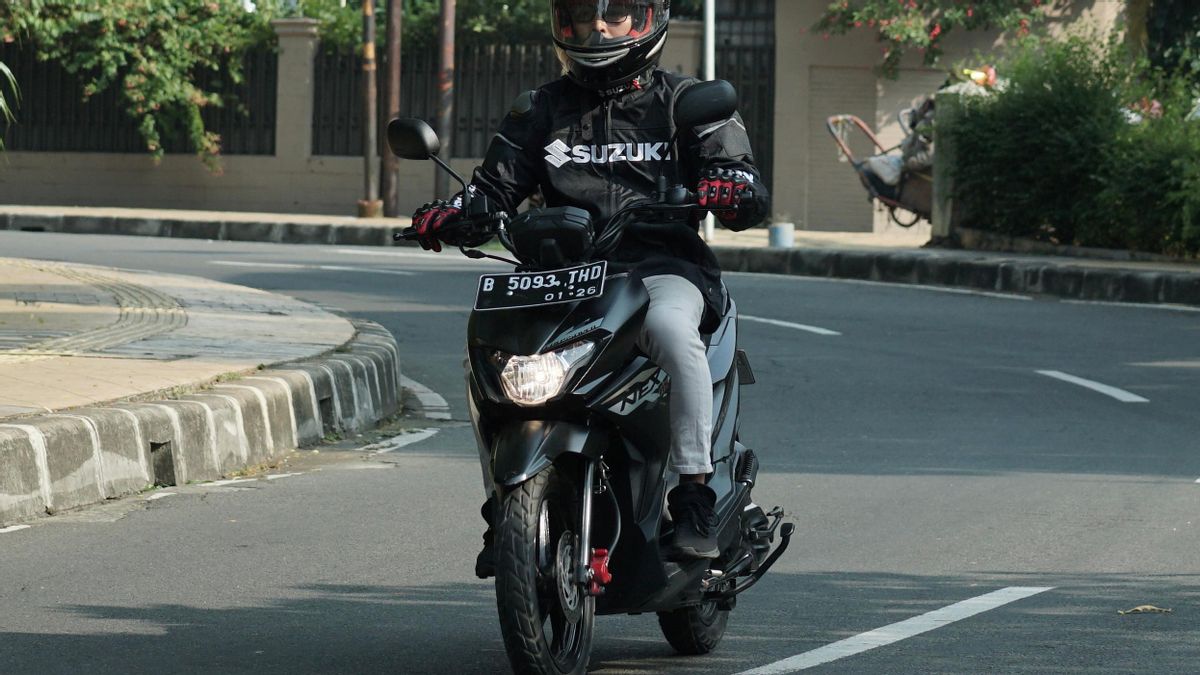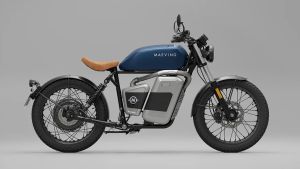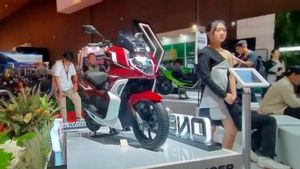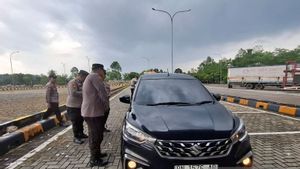JAKARTA - Motorcycle accidents caused by human error are still the main causes of high accidents in Indonesia. This fact makes sense because 85 percent of households in Indonesia have motorbikes.
Meanwhile, based on findings from the Traffic Police Corps (Korlantas), it shows that as many as 76 percent of accidents in Indonesia involve motorcycles. The highest cause of the accident was the failure to maintain a safe distance and carelessness while driving, including ignoring the ethics and driving regulations which of course relate to braking.
According to Asst to Service Dept Head of PT SIS Hariadi, in driving arts, braking techniques are important to control when driving.
Accidents due to less careful motorist behavior can occur at any time and are not predictable. Knowledge and mastery of braking techniques can help avoid drivers from fatal conditions on trips," he said, in his official statement, Friday, May 17.
To reduce the risk of accidents, Suzuki provides some practical tips for safe braking. So what? Let's look below.
Keep the position of the motorbike straight during braking
When driving, be on guard and regulate the correct posture ethics, namely an upright and relaxed sitting position, and both hands are in control of the steering handlebar with slightly bent elbows in order to have more control when controlling the bike.
When faced with an unexpected situation and requires braking, keep the motorcycle direction straight so that balance is maintained and ensure maximum traction on motorcycle tires when braking.
Don't panic
Vehicle users should not panic when dealing with an emergency situation, keep in mind that braking must be done in stages. For example, pulling the front brake lever is followed by a gradual back brake lever and a constant interval so that the speed of the motorbike gradually decreases without locking the wheels or avoiding the brake camp to heat.
SEE ALSO:
Know the time interval for taking decisions on the road
Keeping distance between vehicles is very crucial to give good braking decision-making time. In general, a person's normal eye distance is as far as 30 m. This distance is the ideal situation to be able to read, predict, and make decisions while driving.
Under normal road conditions, a person can respond to conditions ranging from picking up signals to braking (for example to red lights and traffic recommendations) in a faster time than unexpected conditions. Often when faced with surprising conditions such as impromptu crossings or vehicles cutting directions, the driver takes longer, where the driver will usually digest the danger signal within 1.5 seconds and decide to brake at the next second.
Realizing the surrounding conditions and maintaining a safe distance
According to TMC Polda Metro Jaya, the lower the driving speed, the smaller the distance that must be applied, and vice versa. For example, for a speed of 30 km/hour, the safe distance is 30 meters, while for a speed of 80 km/hour, the safe distance is 80 meters. U
Make sure the condition of the body is prime
Failure to respond to danger resulting in accidents is usually caused by the condition of tired motorists. For this reason, make sure the body's condition is prime and avoid driving late at night or outside of activity hours, and not taking drugs that have side effects on the body.
Do a light check before driving
Motorcycles used in daily activities need periodic attention, especially in control devices and tires. At the beginning of driving, do a front and rear braking test to ensure that each brake can stop the motorbike properly when driving. In addition, every week the pressure check and tire tread are also good for doing so that it can anticipate risks that can arise due to tires that have been degraded in quality.
The English, Chinese, Japanese, Arabic, and French versions are automatically generated by the AI. So there may still be inaccuracies in translating, please always see Indonesian as our main language. (system supported by DigitalSiber.id)
















